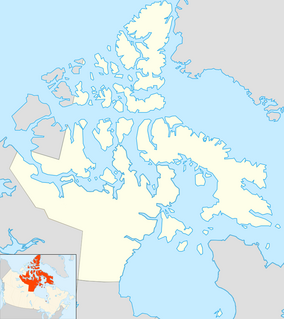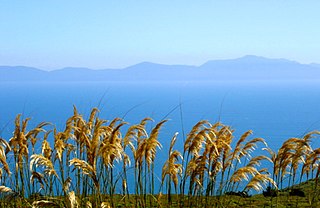| Geography | |
|---|---|
| Location | Hudson Strait |
| Coordinates | 62°48′N69°49′W / 62.80°N 69.81°W Coordinates: 62°48′N69°49′W / 62.80°N 69.81°W |
| Archipelago | Canadian Arctic Archipelago |
| Administration | |
| Territory | Nunavut |
| Region | Qikiqtaaluk |
| Demographics | |
| Population | Uninhabited |
Uugalautiit Island is an uninhabited island located in Qikiqtaaluk Region, Nunavut, Canada. It is a Baffin Island offshore island in Hudson Strait. The closest community is Kimmirut, 6.2 km (3.9 mi) away. [1]

The Qikiqtaaluk Region, Qikiqtani Region or Baffin Region is the easternmost administrative region of Nunavut, Canada. Qikiqtaaluk is the traditional Inuktitut name for Baffin Island. Although the Qikiqtaaluk Region is the most commonly used name in official contexts, several notable public organisations, including Statistics Canada prefer the older term Baffin Region.

Nunavut is the newest, largest, and most northerly territory of Canada. It was separated officially from the Northwest Territories on April 1, 1999, via the Nunavut Act and the Nunavut Land Claims Agreement Act, though the boundaries had been drawn in 1993. The creation of Nunavut resulted in the first major change to Canada's political map since the incorporation of the province of Newfoundland in 1949.

Canada is a country in the northern part of North America. Its ten provinces and three territories extend from the Atlantic to the Pacific and northward into the Arctic Ocean, covering 9.98 million square kilometres, making it the world's second-largest country by total area. Canada's southern border with the United States is the world's longest bi-national land border. Its capital is Ottawa, and its three largest metropolitan areas are Toronto, Montreal, and Vancouver. As a whole, Canada is sparsely populated, the majority of its land area being dominated by forest and tundra. Consequently, its population is highly urbanized, with over 80 percent of its inhabitants concentrated in large and medium-sized cities, many near the southern border. Canada's climate varies widely across its vast area, ranging from arctic weather in the north, to hot summers in the southern regions, with four distinct seasons.
Other islands in the immediate vicinity include: Lavoie Island, Wishart Island, Nuvursirpaaraaluk Island, Lee Island, Forder Island, Poodlatee Island, Beacon Island, Black Bluff Island, Aulassivik Island, Ijjurittiak Island, Ivisaat Island, Glasgow Island, Juet Island, and High Bluff Island.

Lavoie Island is an uninhabited island located in Qikiqtaaluk Region, Nunavut, Canada. It is a Baffin Island offshore island in Hudson Strait, and a member of the Sheer Islands, along with Forder Island, Lee Island, and Wishart Island. The closest community is Kimmirut, 24.5 km (15.2 mi) away. It has been named after Constable Joseph Adolphe Arthur Lavoie who served in Royal Canadian Mounted Police (RCMP#10332) from July 4, 1927 to October 15, 1941.

Wishart Island is an uninhabited island located in Qikiqtaaluk Region, Nunavut, Canada. It is a Baffin Island offshore island in Hudson Strait, and a member of the Sheer Islands. The closest community is Kimmirut, 23.1 km (14.4 mi) away.

Nuvursirpaaraaluk Island is an uninhabited island located in Qikiqtaaluk Region, Nunavut, Canada. It is a Baffin Island offshore island in Hudson Strait. The closest community is Kimmirut, 17 km (11 mi) away.





